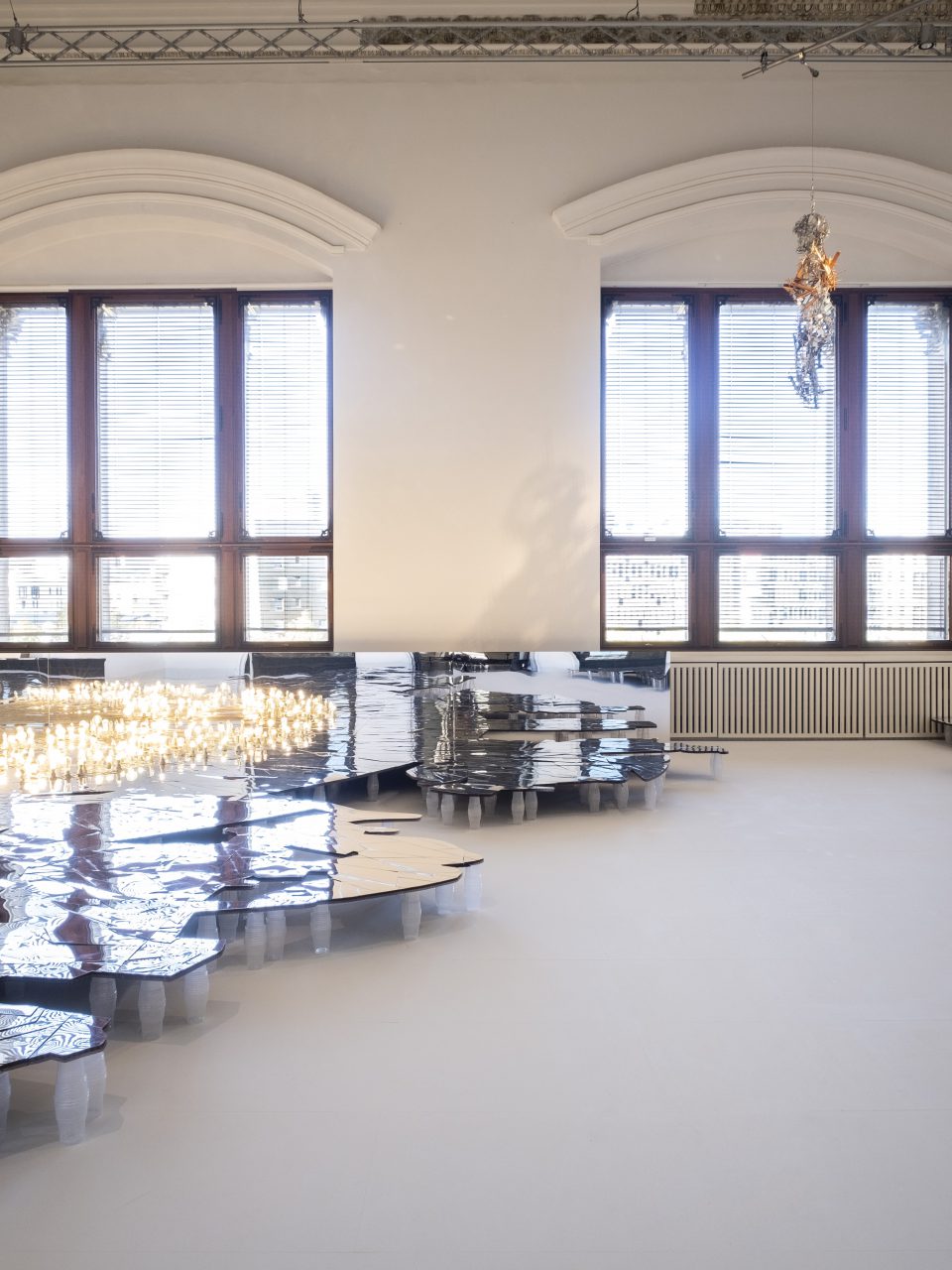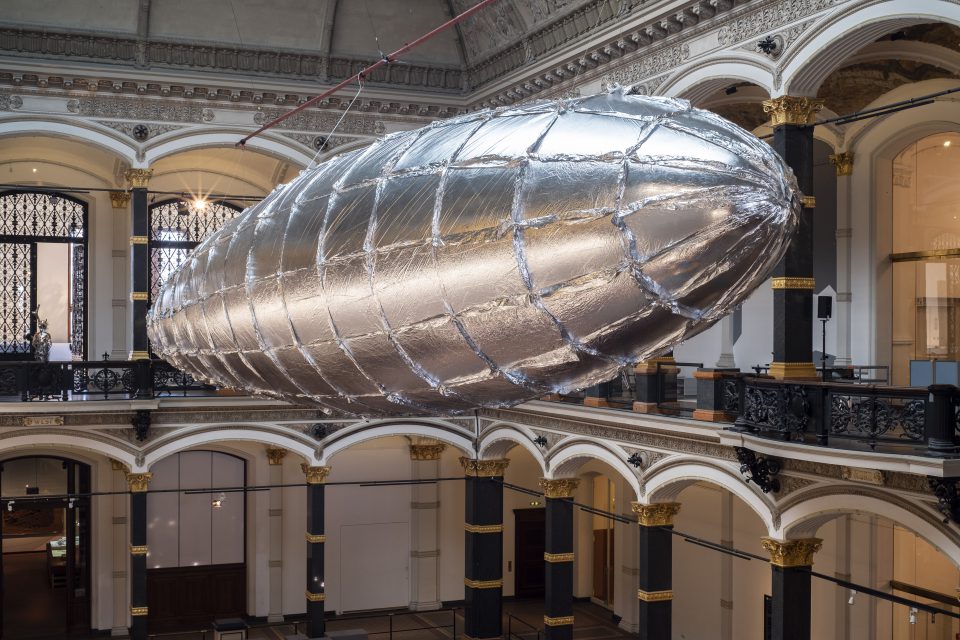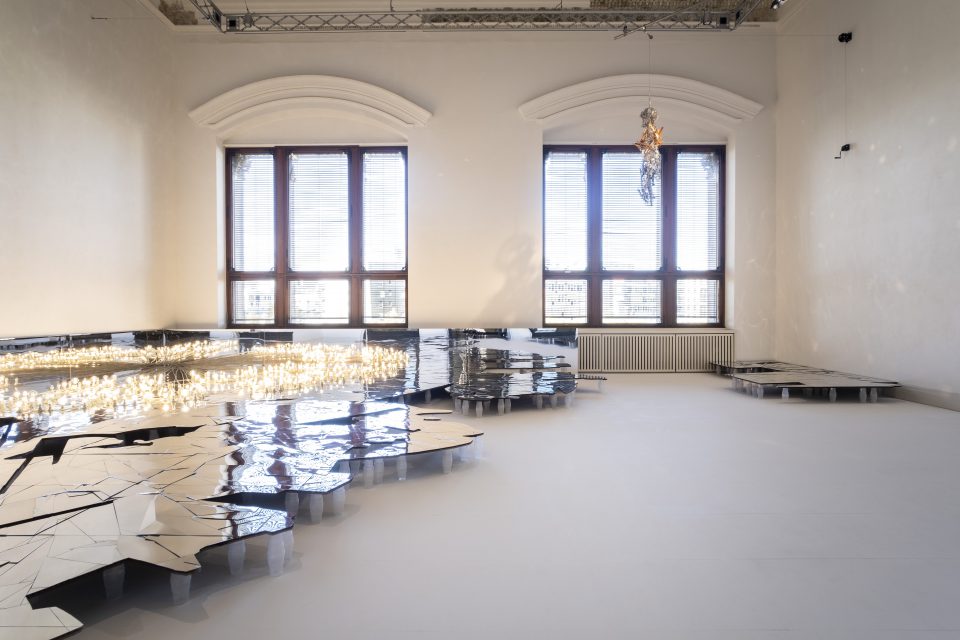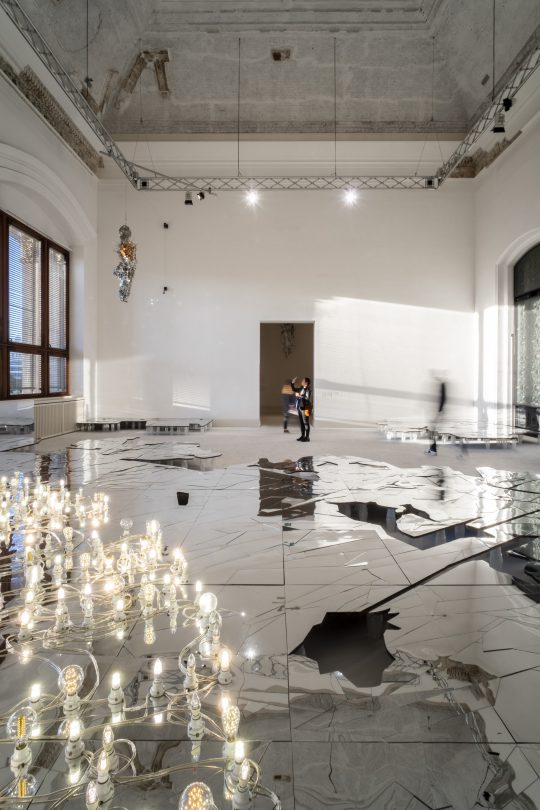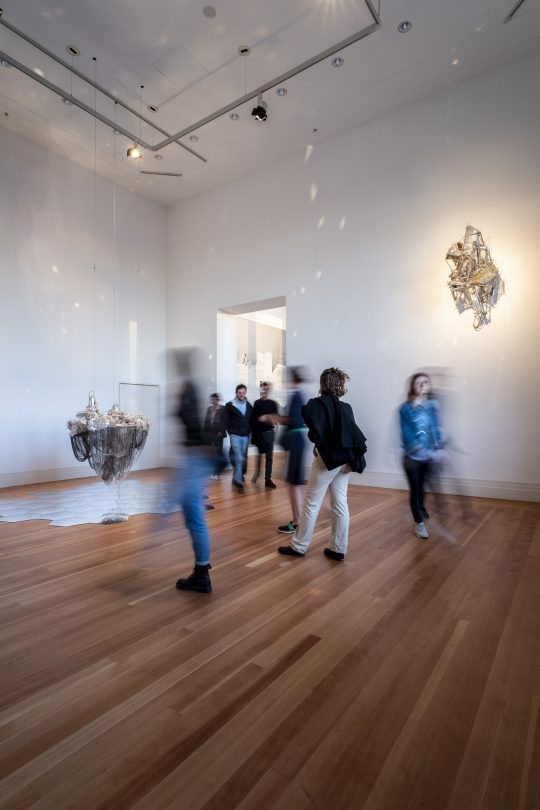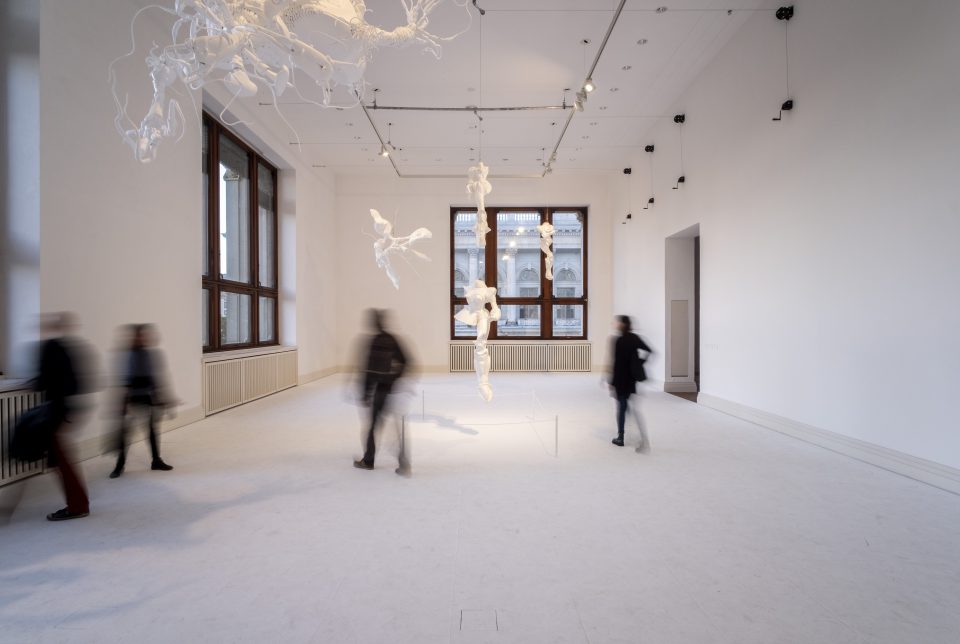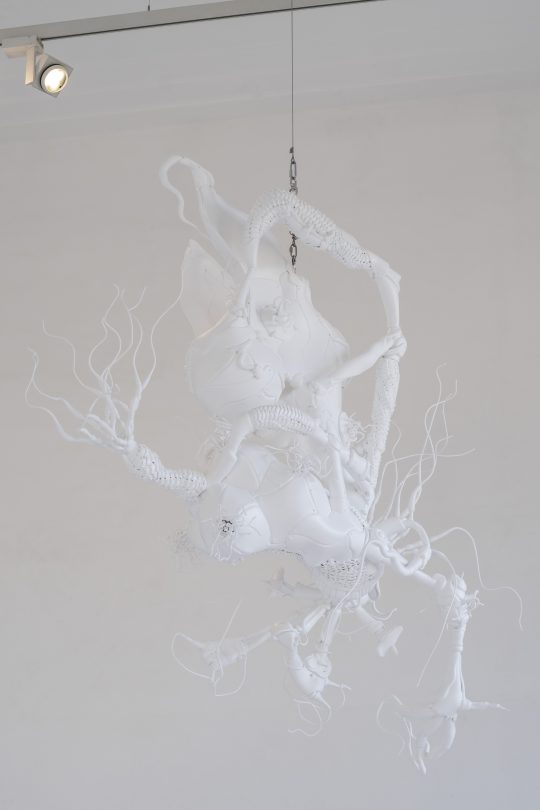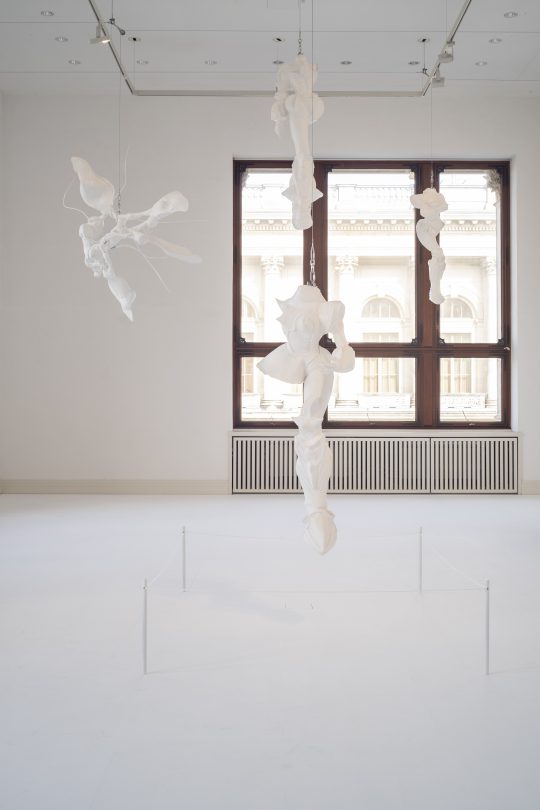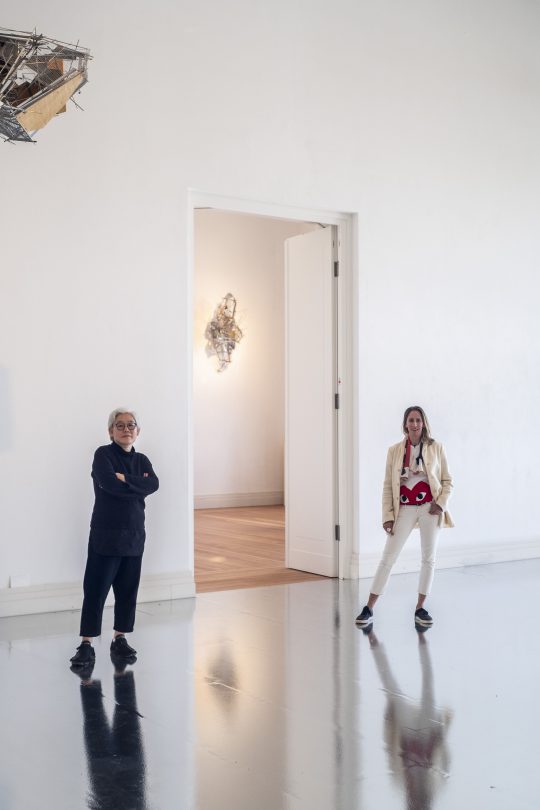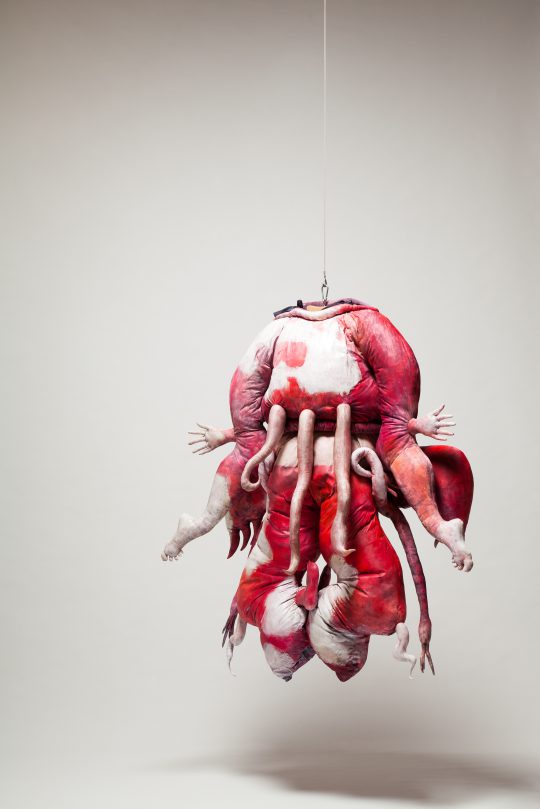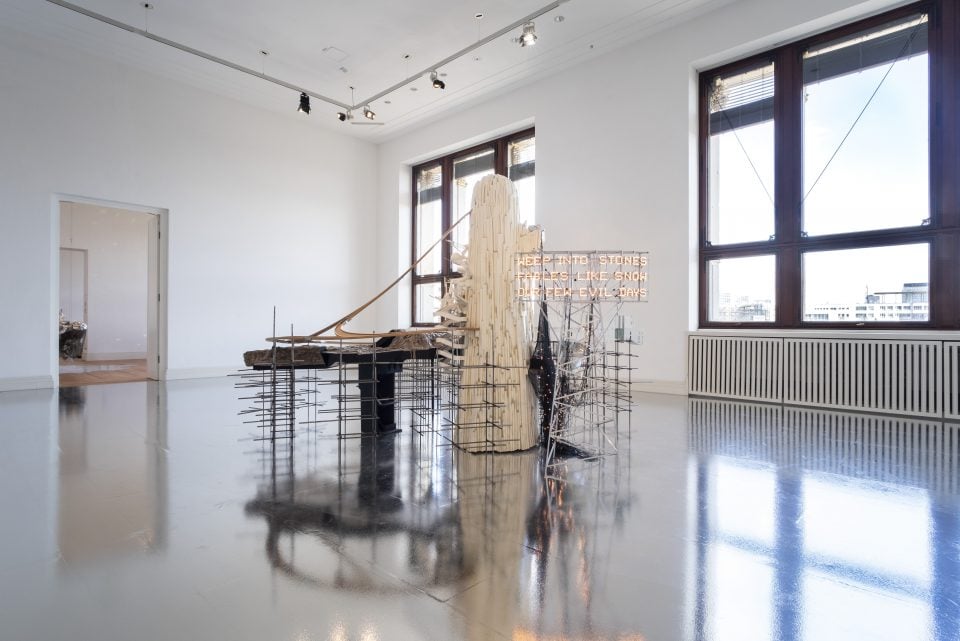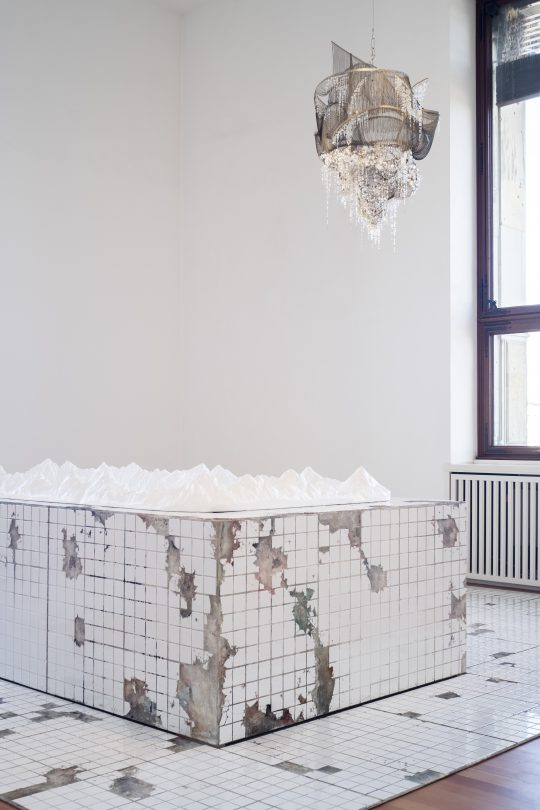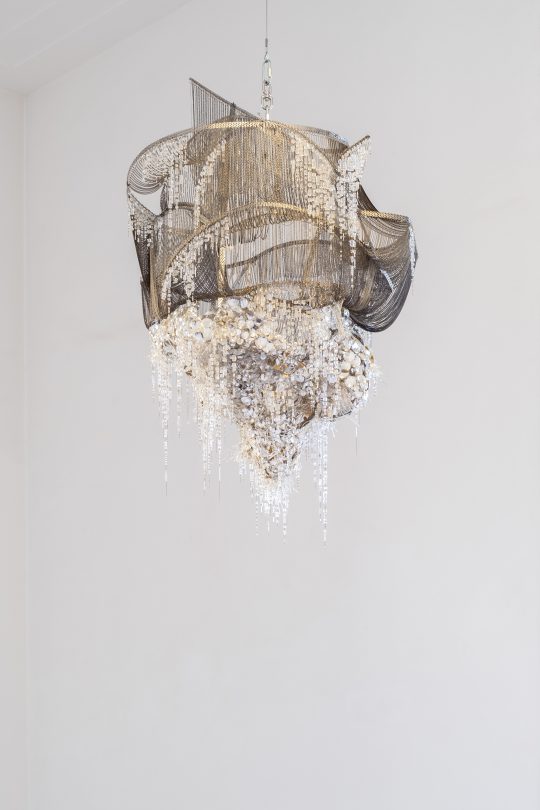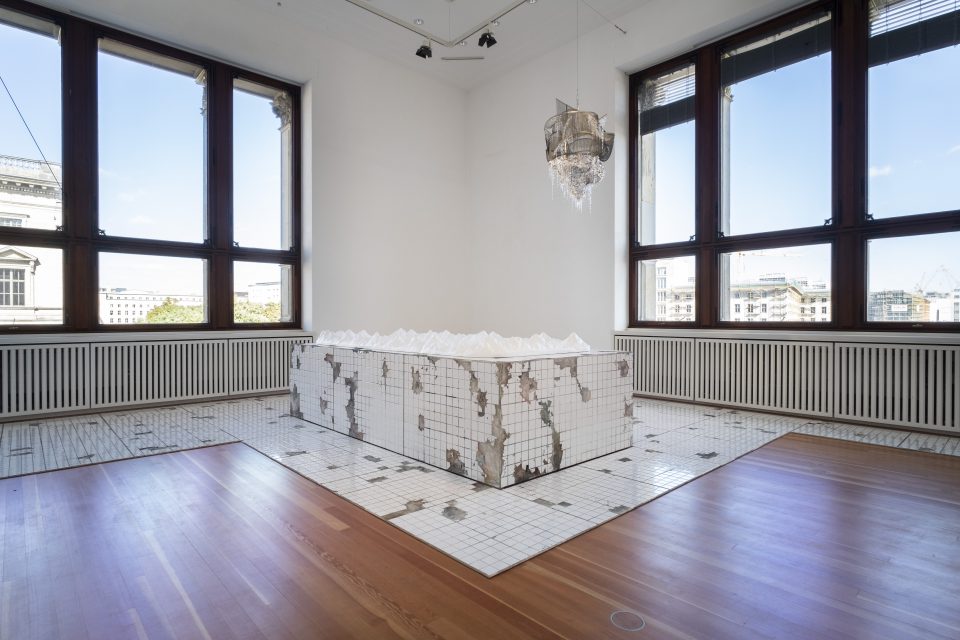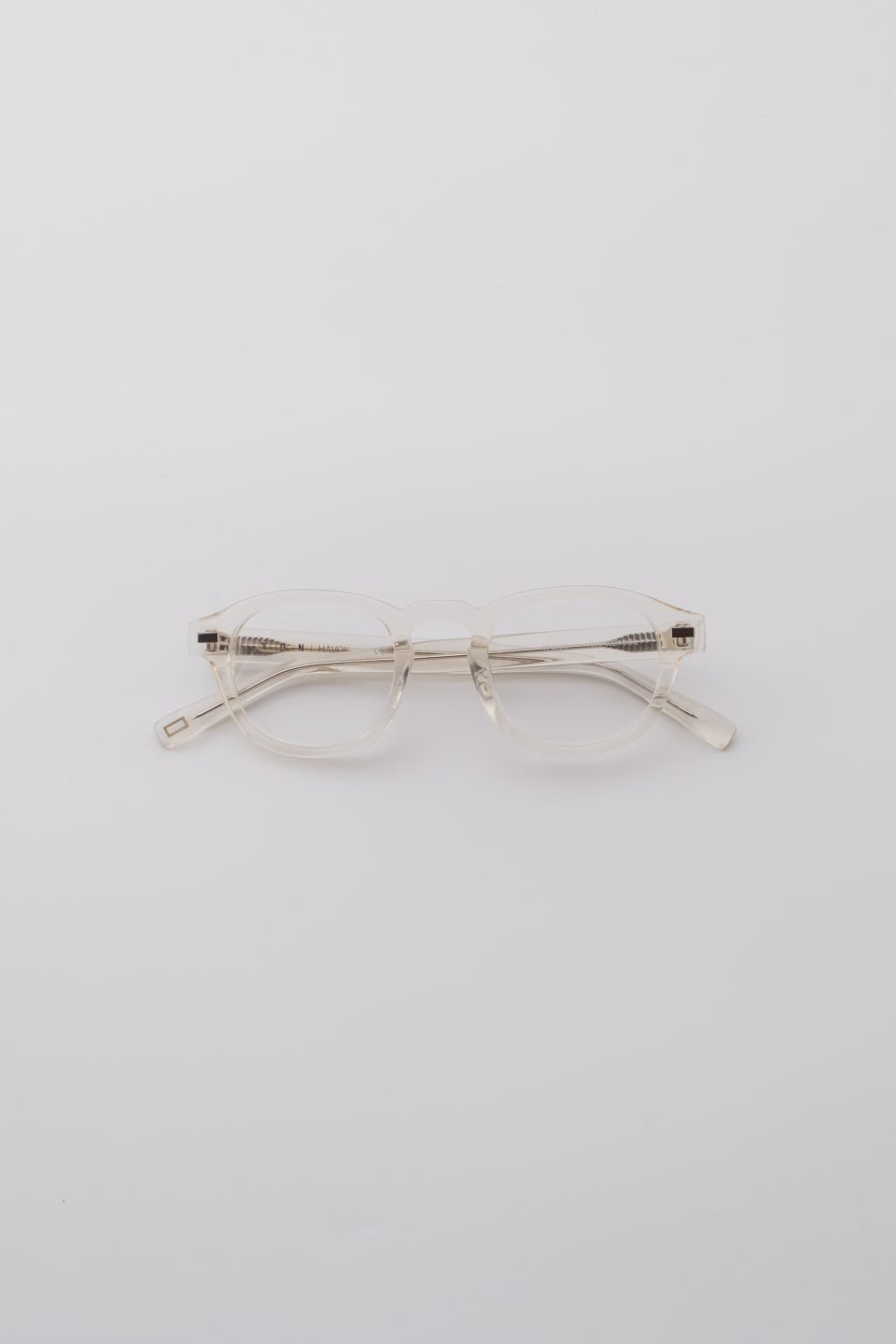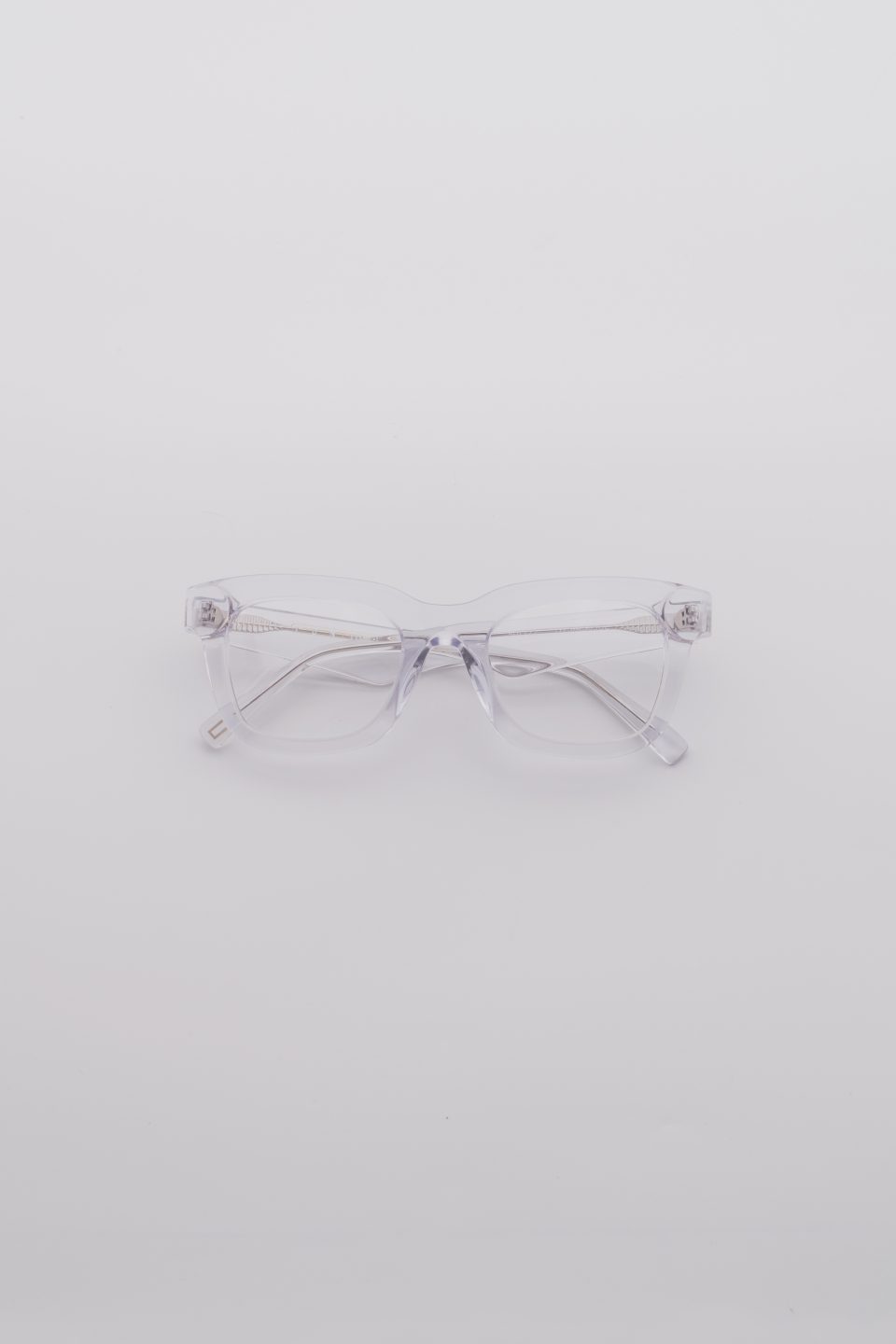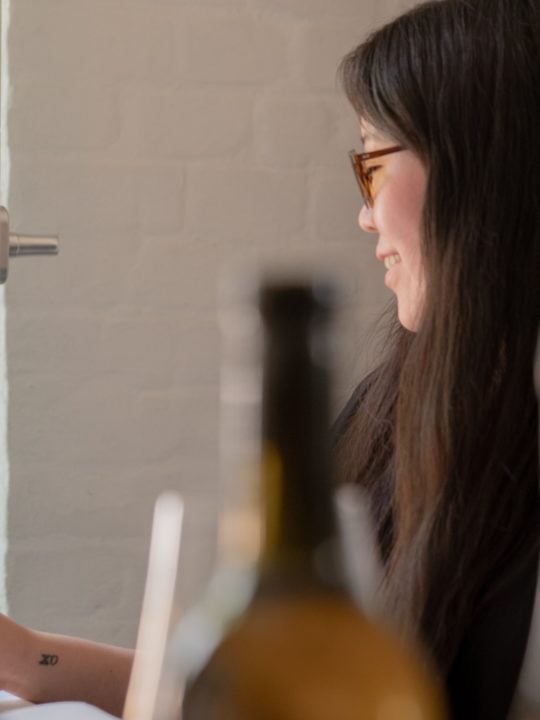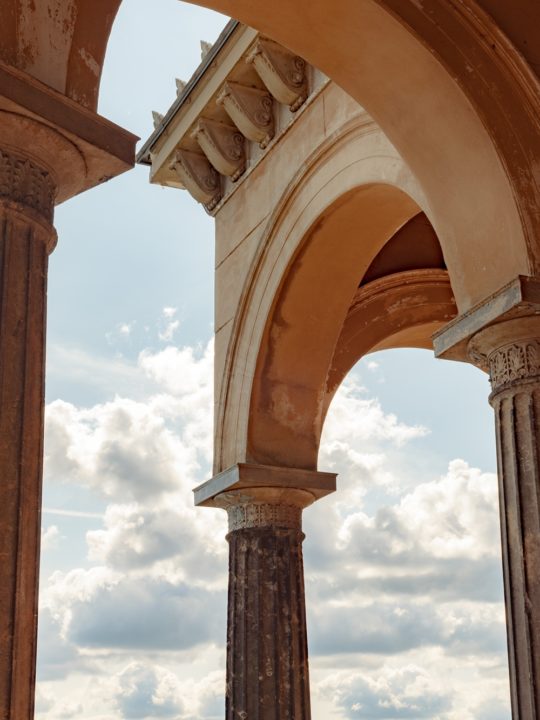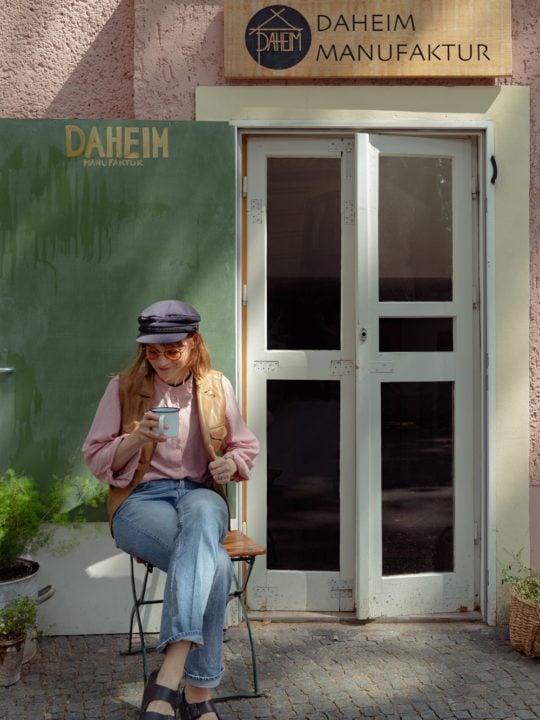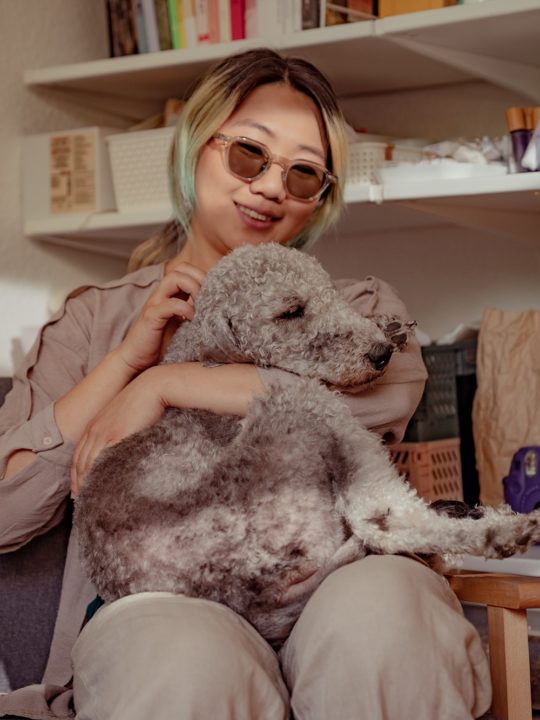LEE BULL: CRASH, A REVIEW
Korean artist, Lee Bul is exhibiting her solo show in Berlin's Gropius Bau: Crash. And you've still got time to visit!
WORDS BY LAURA SODANO
Lee Bul is one of the most important Korean artists of her generation. The Martin-Gropius-Bau presents her first solo exhibition in Germany and a comprehensive survey of her work. “Crash” is open until 13th January 2018.
Arriving at the first floor of the Martin-Gropius-Bau we are met with the sight of a huge silver Zeppelin balloon hanging from the ceiling in the middle of the rotunda. We follow the path around its circumference, eyes locked on the huge shining object in the middle of the room. Below people wander through another exhibition: “Restless Times. Archaeology in Germany.” Past times meet future ideas; everything seems to go hand in hand. An ideal introduction into Lee Bul’s work. She brings together the past, the present and the future – and she wants us, the visitors, to be involved as much as possible.
Lee Bul’s diverse body of work comprises of performances, installations and sculptures, as well as paintings and amorphous objects used as costumes. Throughout her now 30-year artistic career, she has explored dreams, ideals and utopias influenced by futurist theories and science fiction, bioengineering and visionary architecture, mainly concentrating on two topics: the female body, or better to say, women’s roles in society and allusions to the history and politics of Korea.
This first ever solo exhibition in Germany brings together all the different strands of her work and presents them chronologically. As we enter the first room we find ourselves in a field of mirrors, some illuminated by a number of lights placed on top, some throw spherical shapes on the walls. We are absorbed immediately. The journey begins, room by room her oeuvre unfolds.
The mirrors lead the way to videos of her early performances. She is twisting her body, or covering herself in fake blood. Another screen shows her famous rotting fish experiment. As we watch, we are surrounded by the costumes she used in some of the performances. Alien, round, octopus-shaped suits hang from the ceilings. As we carry on the soft amorphous materials transform into solid plastics. Lee Bul’s “Cyborg” series are the perfect example of the level of contradictions in her works. The plastics coloured in white, pink or orange – some are even decorated with tiny (Swarovski) crystals – combine the softness of the female silhouette with futurist armour and sci-fi elements. Bodies as weapons, or as the quote on the wall says: “The body is a battlefield where political and social issues collide. Related to her own experiences, Lee Bul draws a reference to the ambiguous role women have played in history, in the East and the West.
Born 1964 in Yeongju, Korea, Lee Bul grew up under Park’s ruthless military dictatorship. Following the example of her parents, two left-winged dissidents, she studied sculpting at the Hongik University in Seoul and became one of the first female artists in the Korea. Two large timelines in the exhibition detail the major events leading to the democracy we now know. They also state, how women’s roles evolved and the prejudices they still have to fight against. Lee Bul, who also has been part of several relevant female art collectives takes an important role within this.
As we leave the so-called battlefield of the (female) bodies, we enter a sphere where criticism of current politics are confronted with the idea of Utopia. In these imagined world’s, everything seems possible and again we take an active part in it. Some of them transform and vary by our appearance, they reflect us and everyone else in the room. We become part of the work, we resonate with the surroundings.
Stephanie Rosenthal could not have chosen a better location. Being familiar with Lee Bul’s work for years, it’s her first exhibition as the new director of the Martin-Gropius-Bau. She was convinced the historical narrative around this building, would fit perfectly. In the post-war era, the Berlin Wall was erected adjacent to the building’s north facade, situating it in the midst of political conflict. Today, tourists come to this area to find about the history of Berlin, the cold-war and also about the darkest chapter of German history, National Socialism. With this in mind, Lee Bul: Crash becomes even more relevant and evidence of how similar humans wishes and needs are, as much as their dark sides no matter where and when they lived. So, the exhibition also uncovers parallels between German and Korean history. Both countries share similarities, in particular with regard to their division, the national trauma related to this, as well as the question of reunification. “I want to get across a sense of walking through time, through different periods,’ Lee Bul says. “My works are a kind of journey to another place, another time. we travel, but the stories are in the landscape and you can see that it’s always the same place. It’s like a diorama: there is a journey, but it is always the same view. the same site.”
By presenting a different reality she aims to plant the seed to create a future that is more utopian than dystopian.
Lee Bul: Chrash is shown in the Martin-Gropius-Bau until 13th January 2019.

